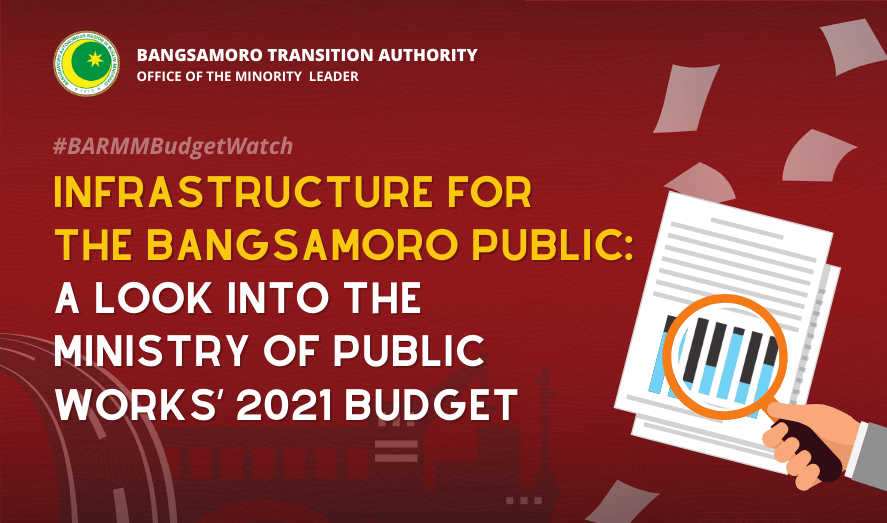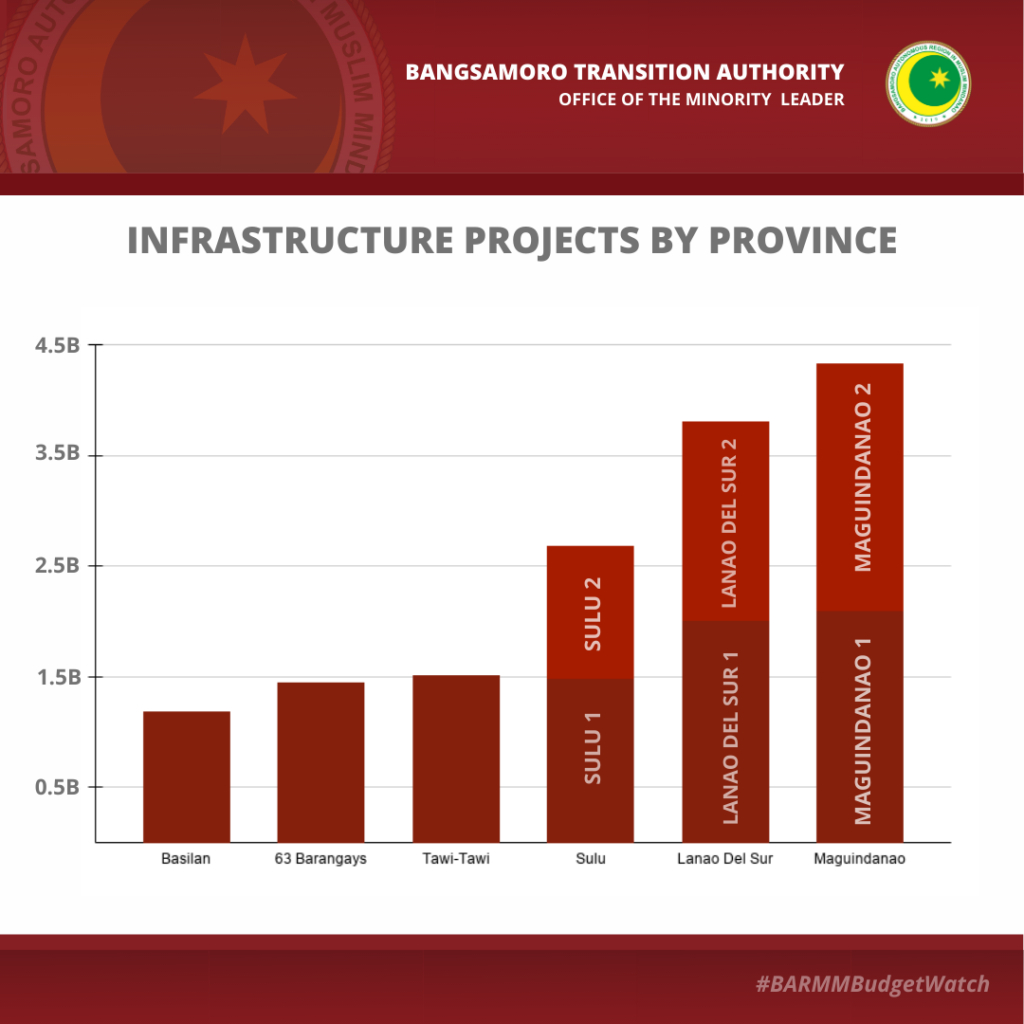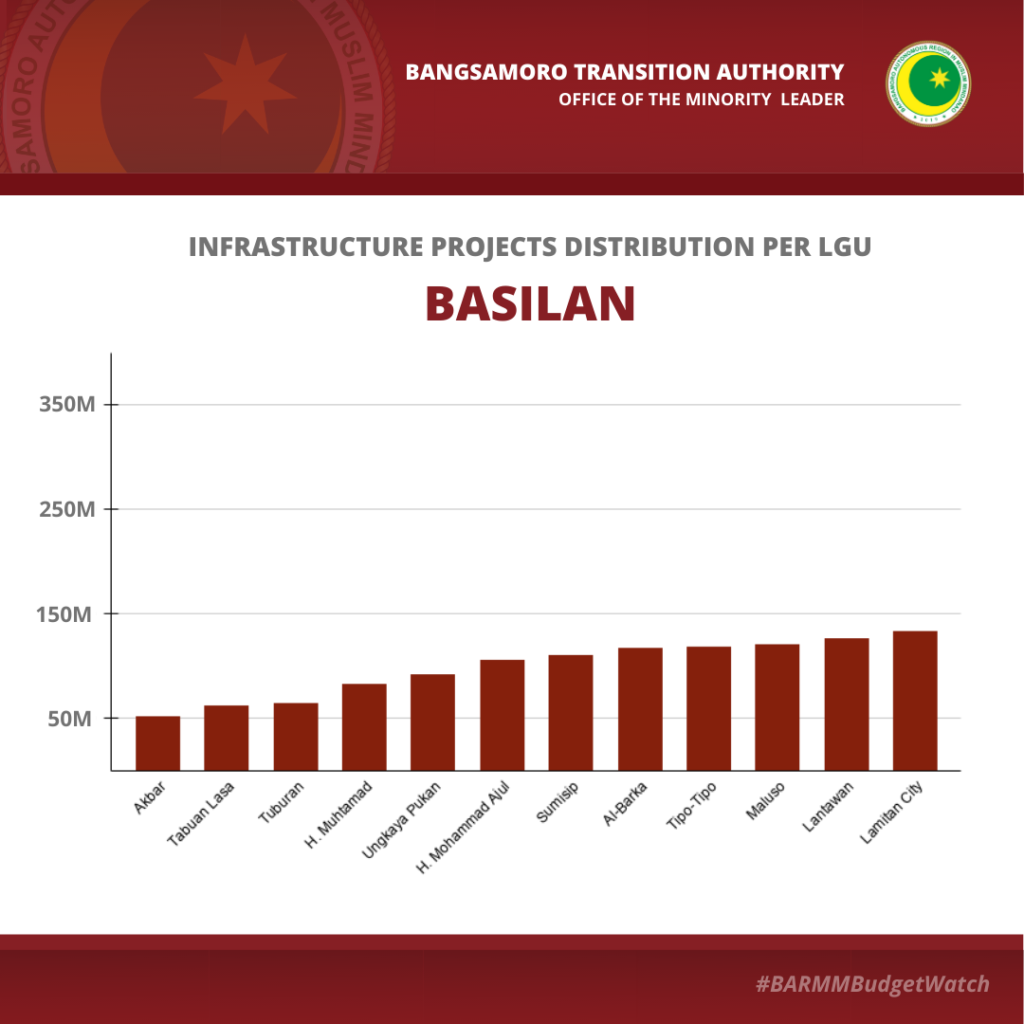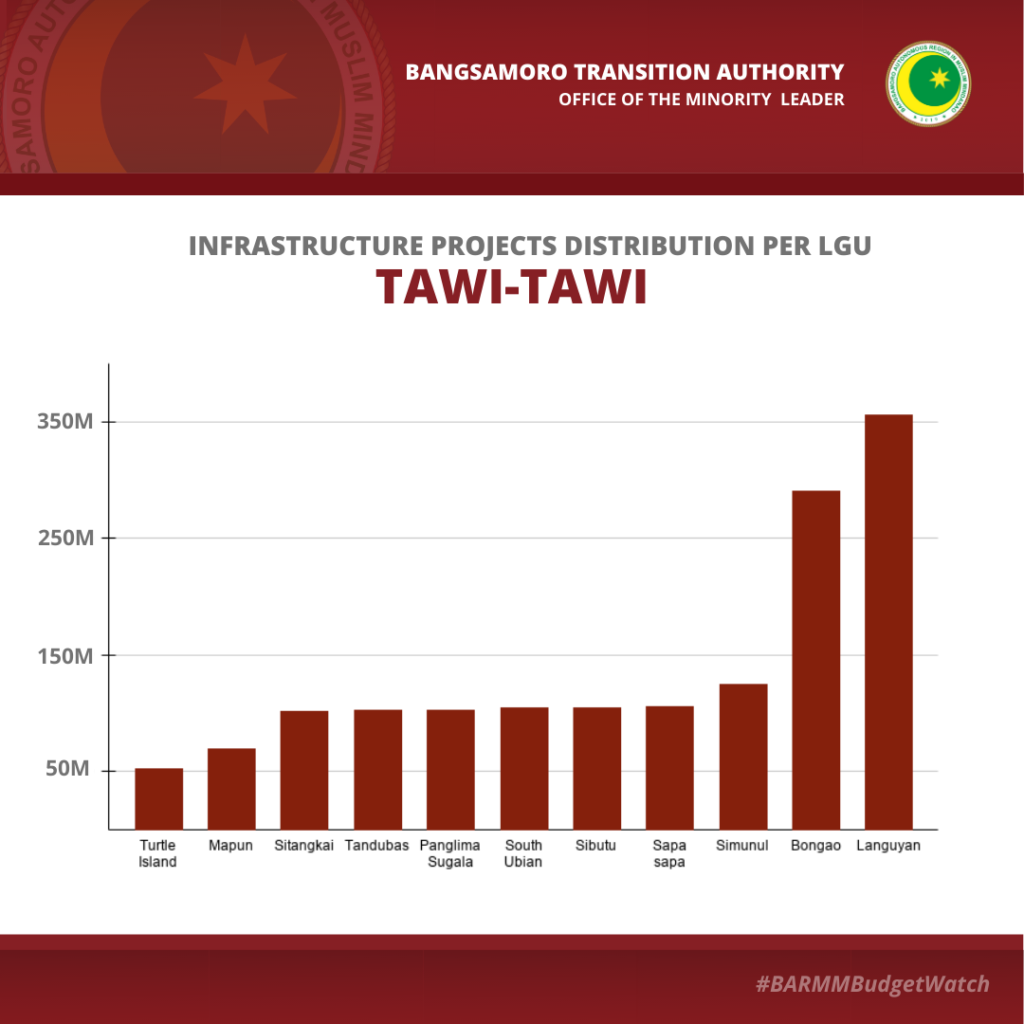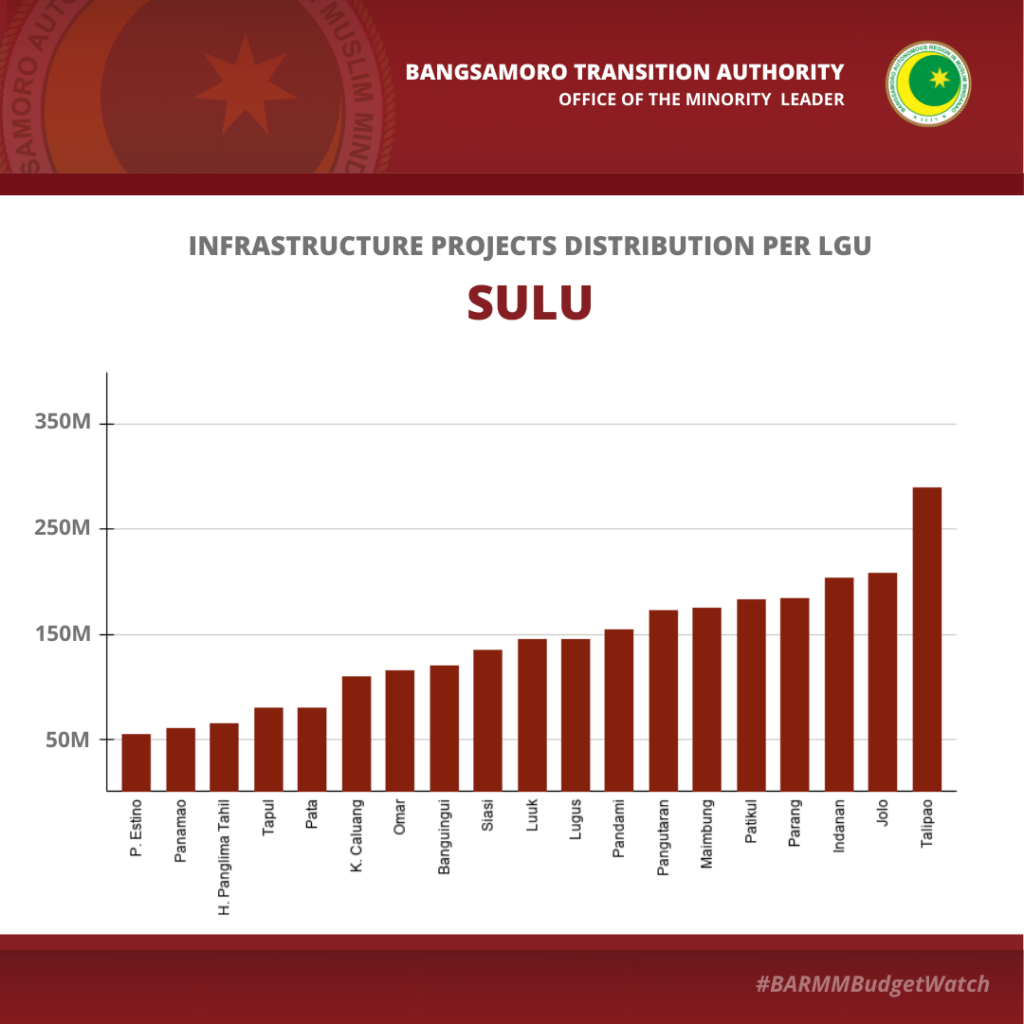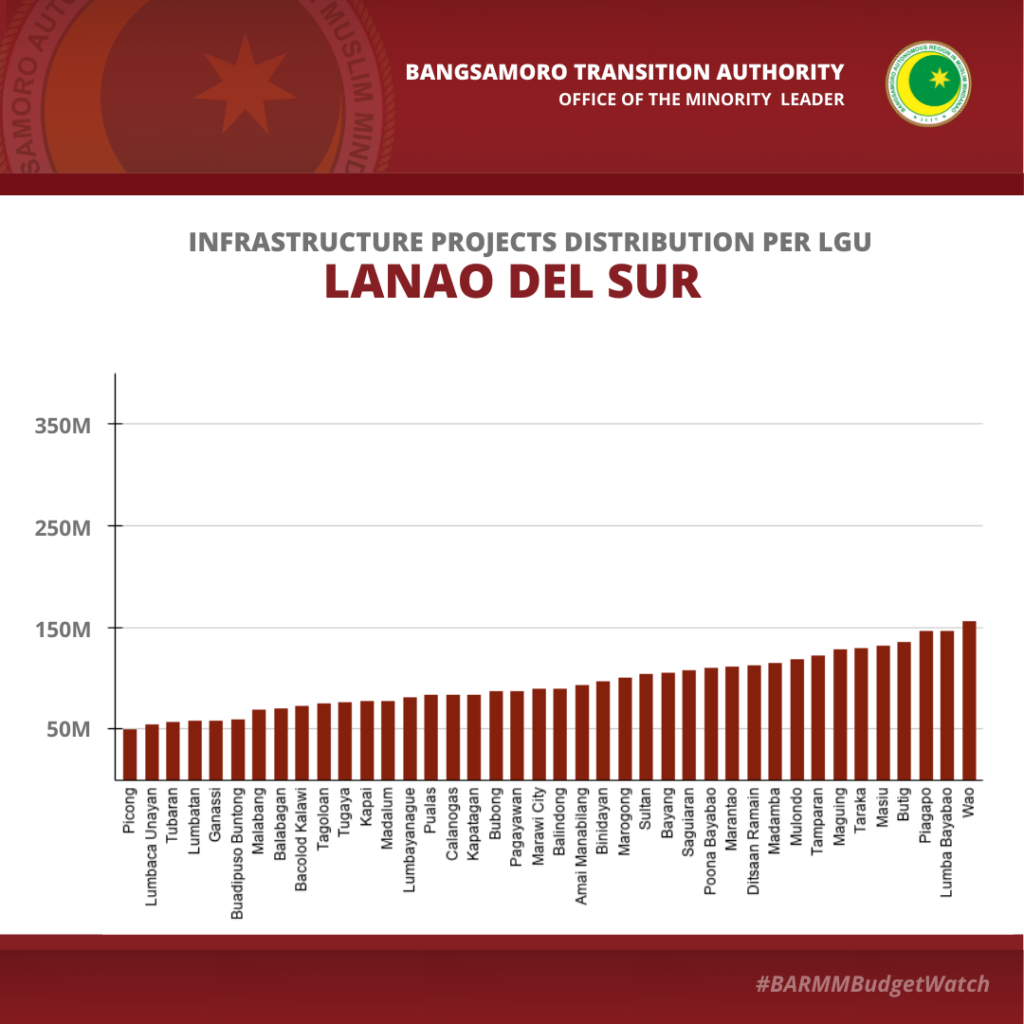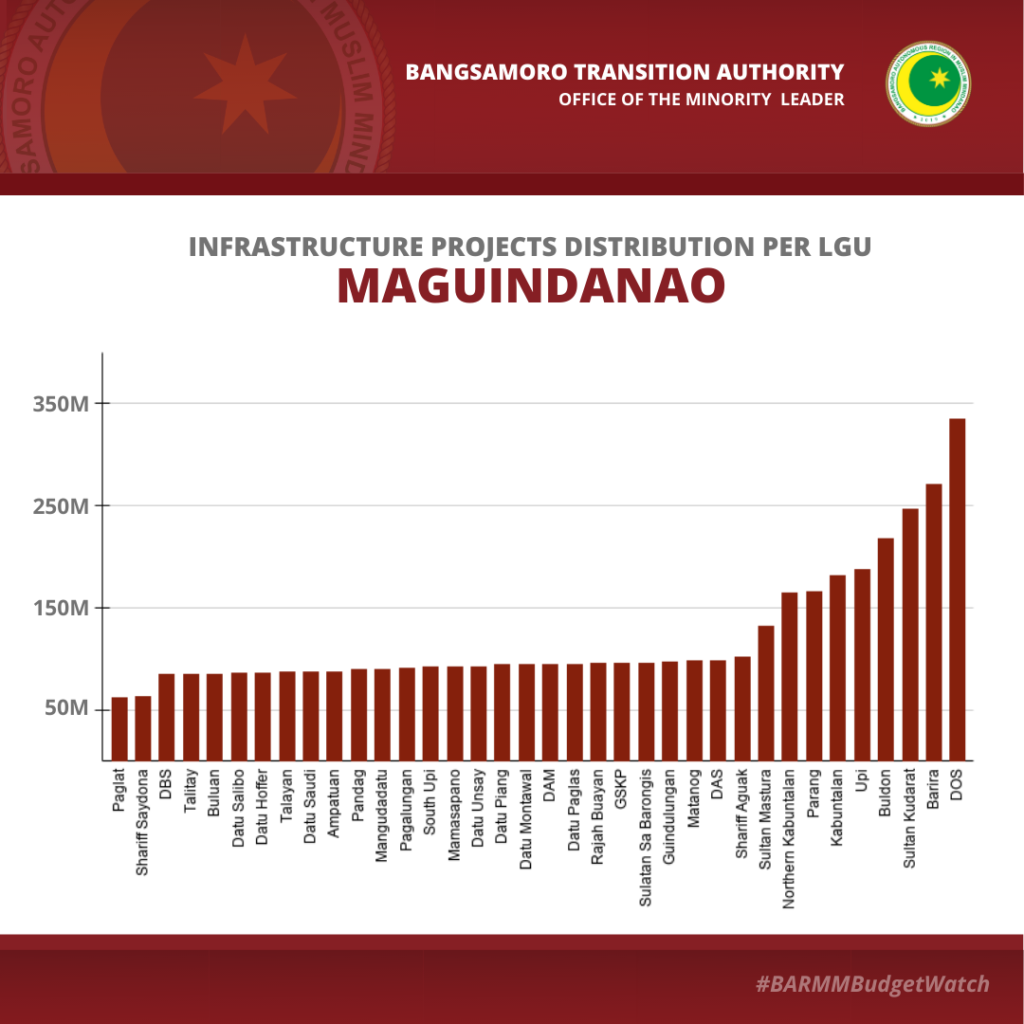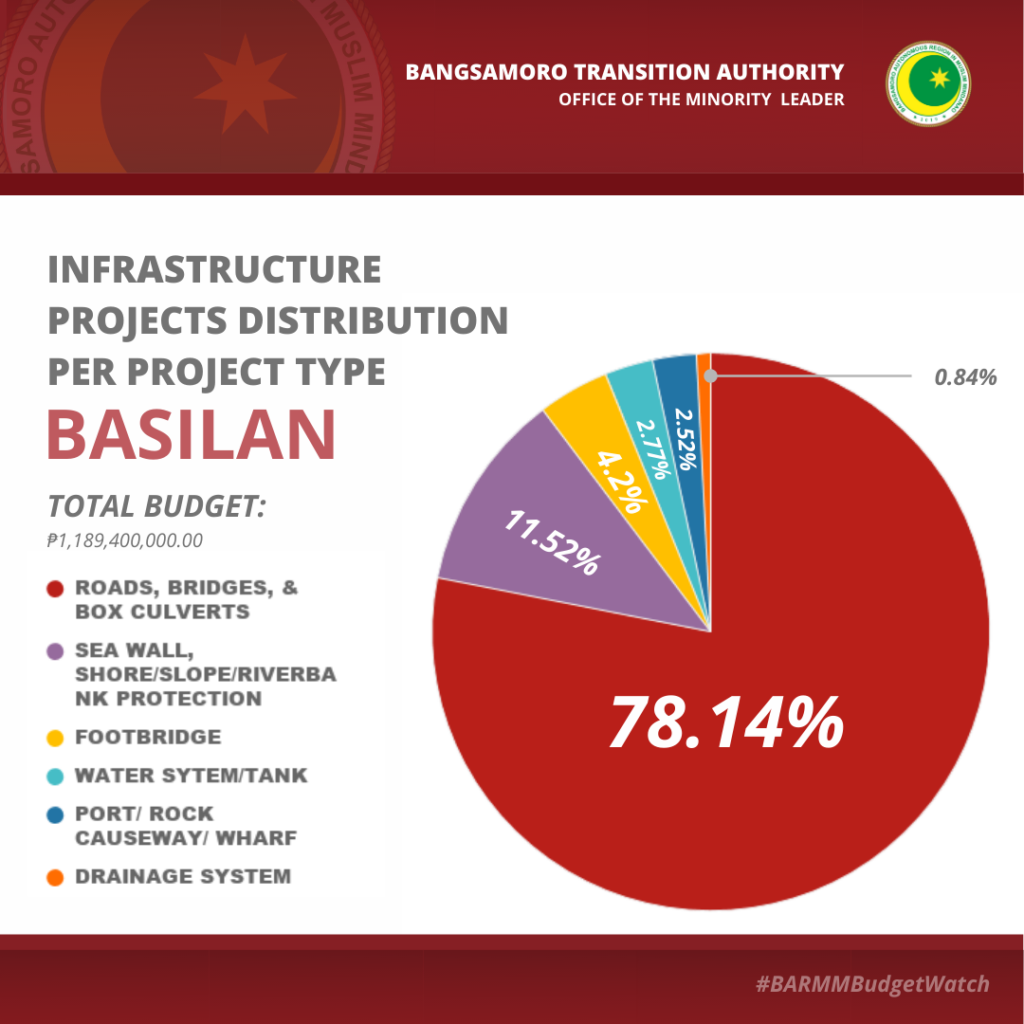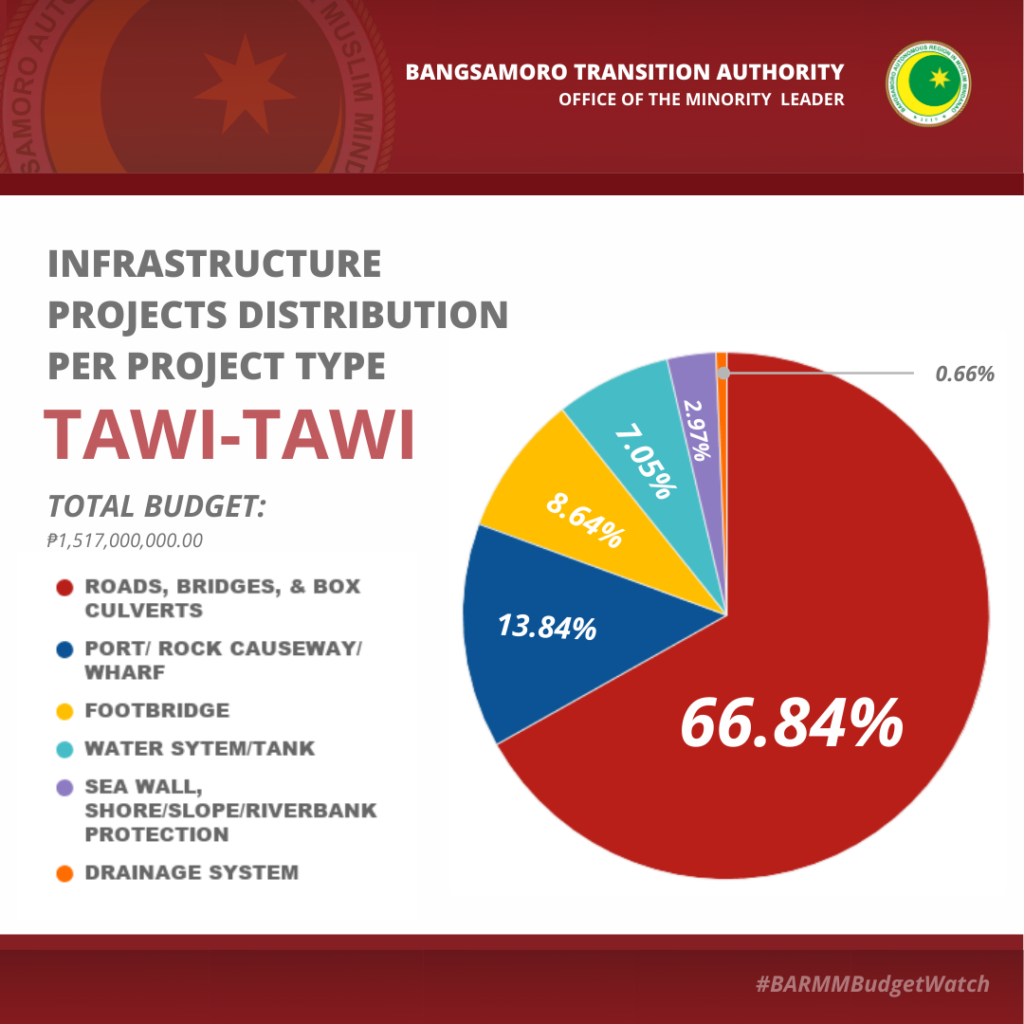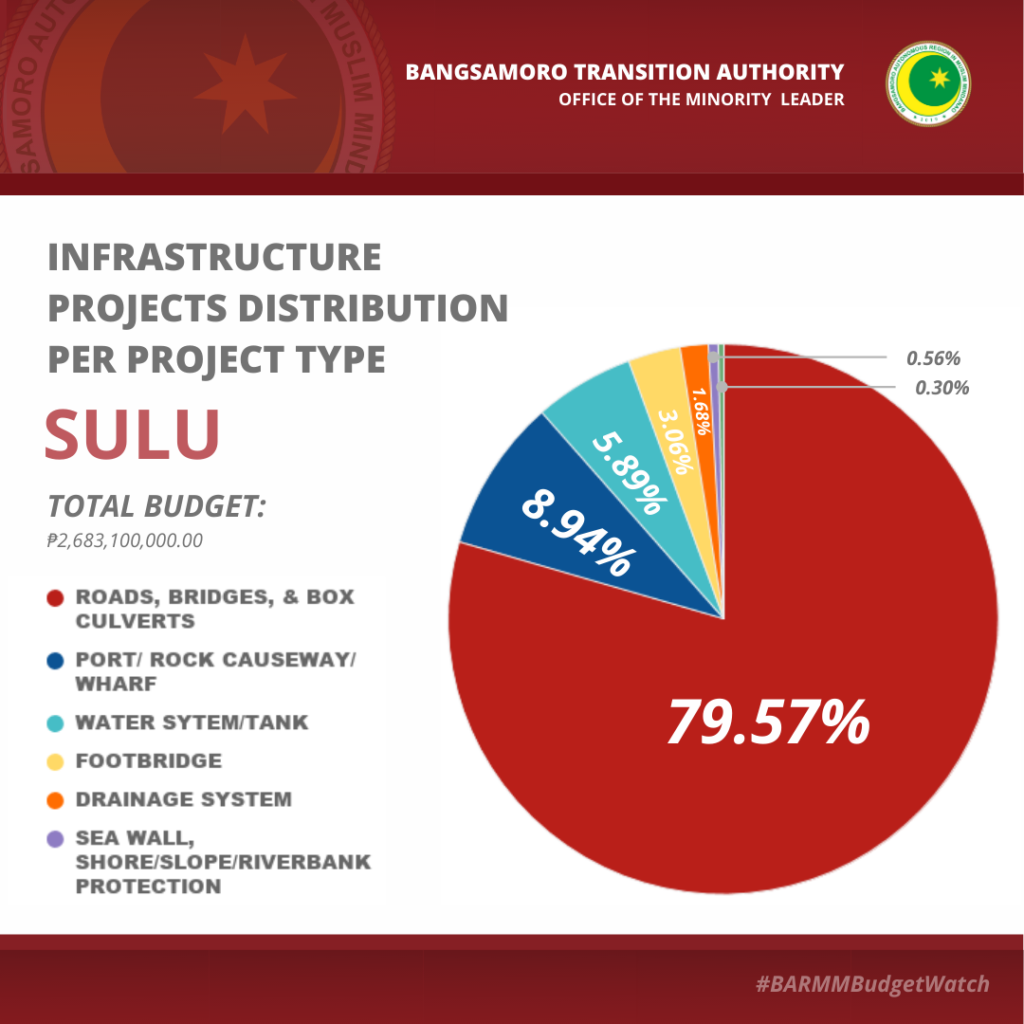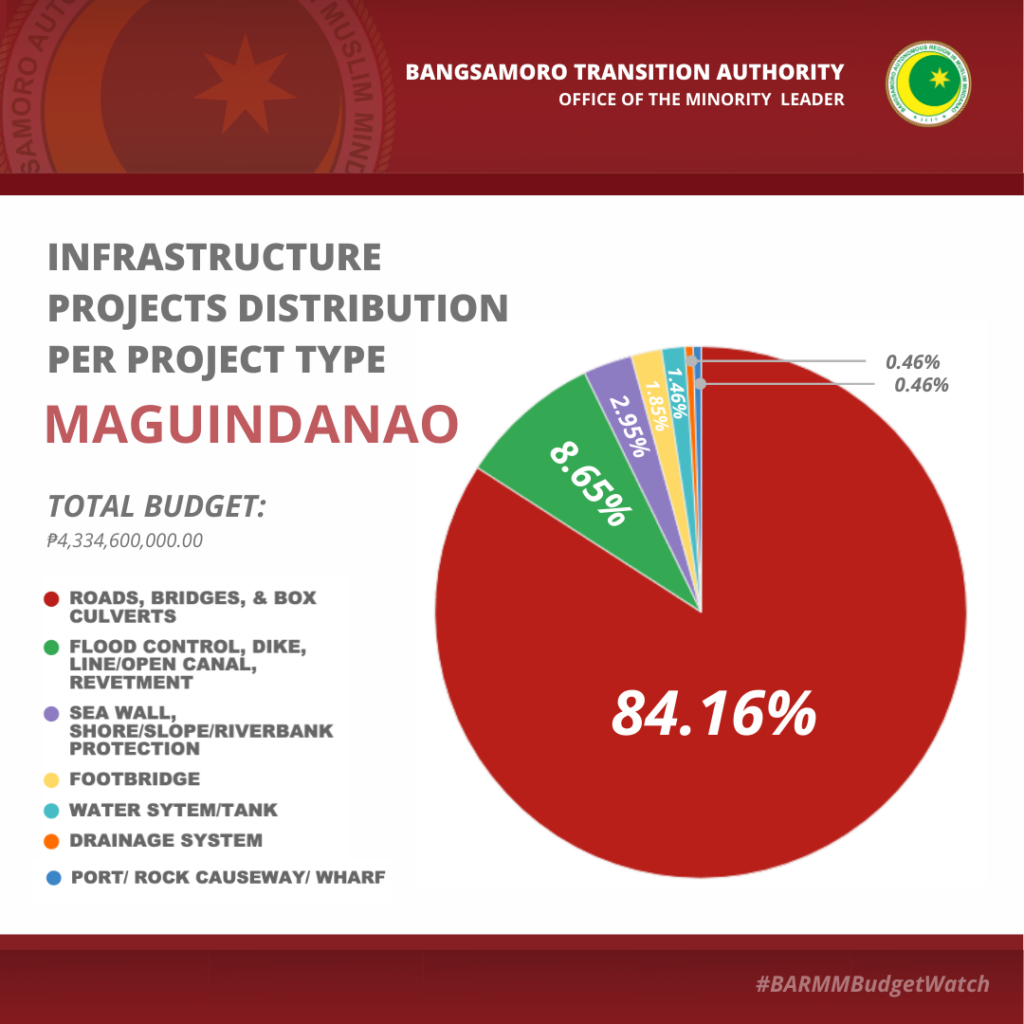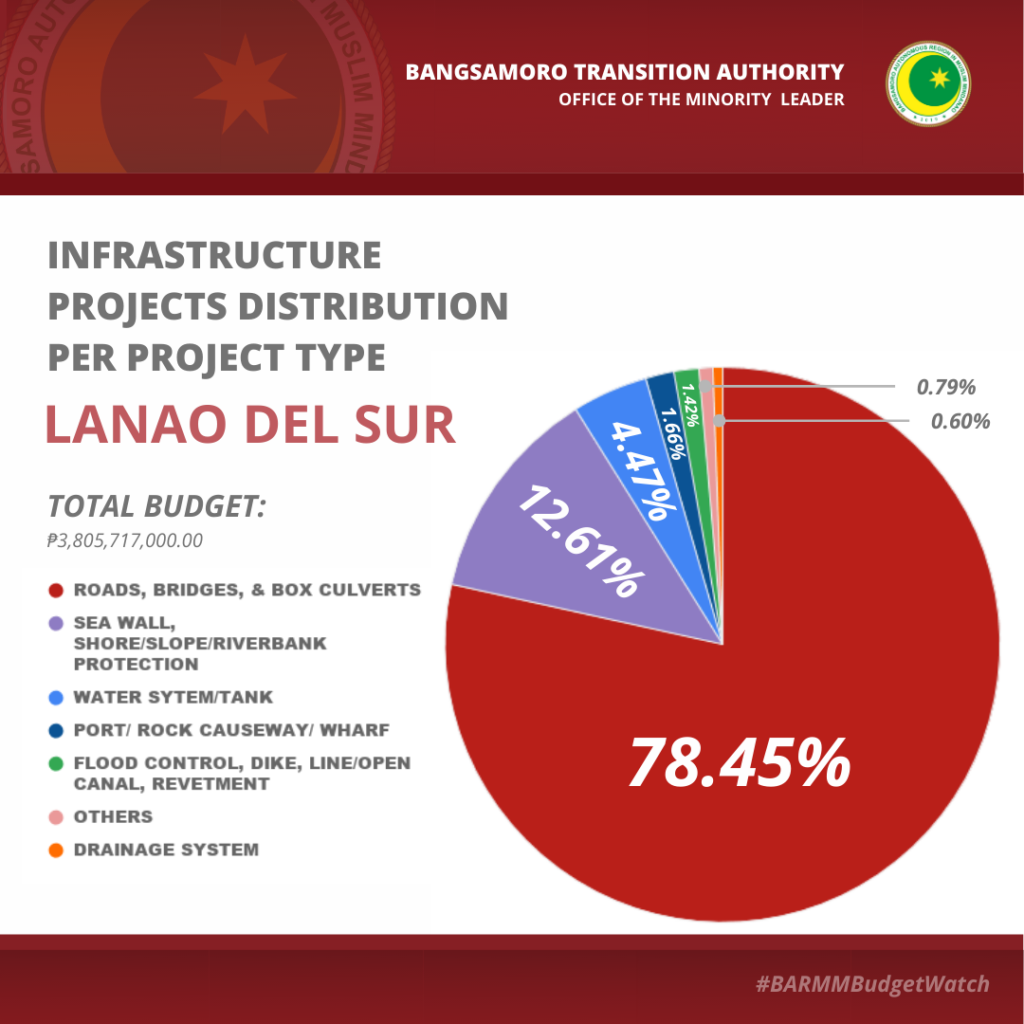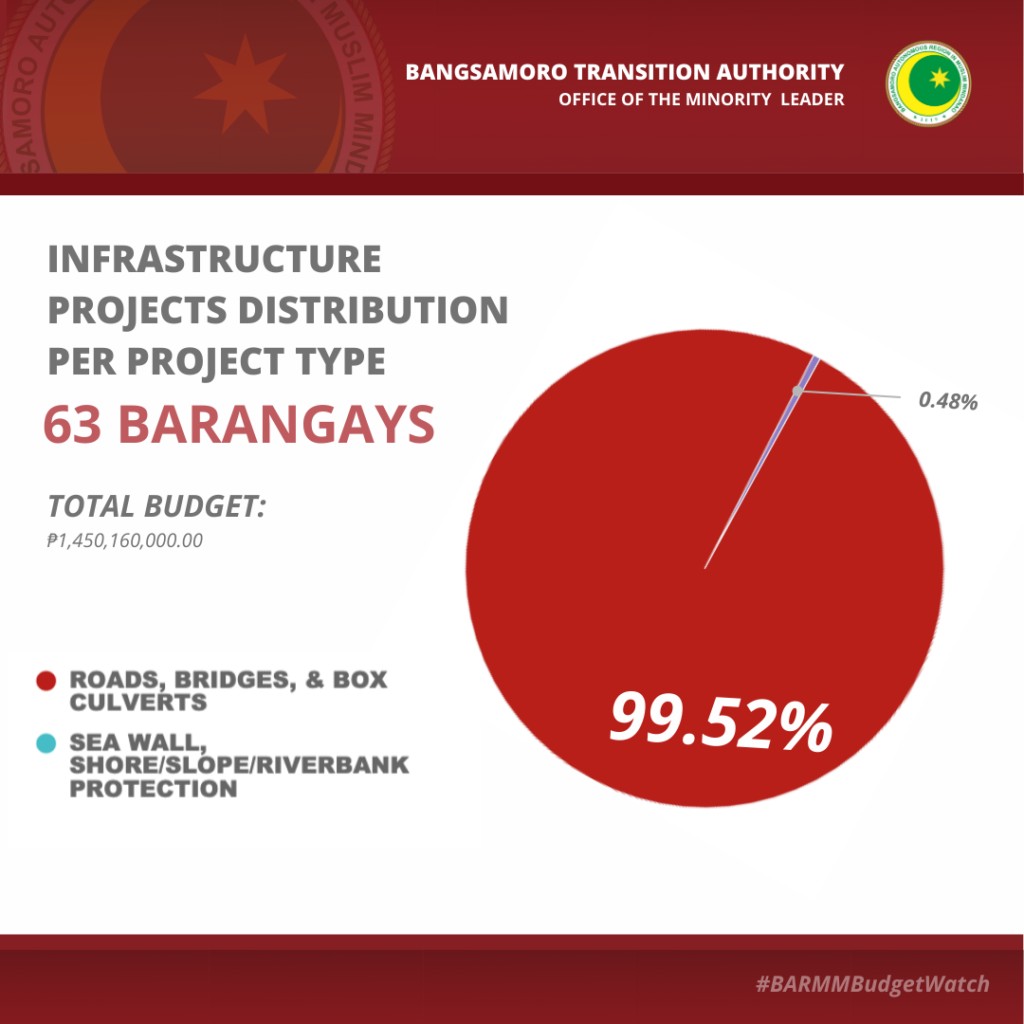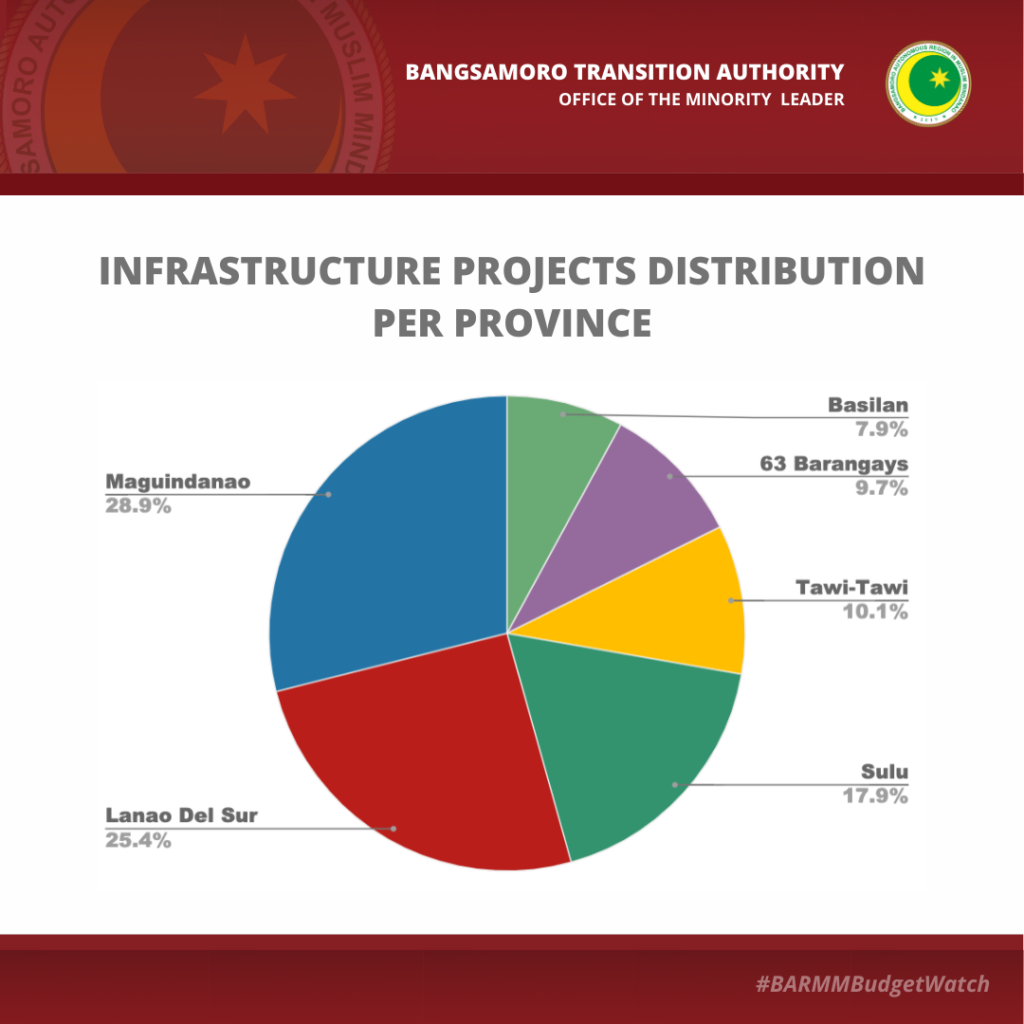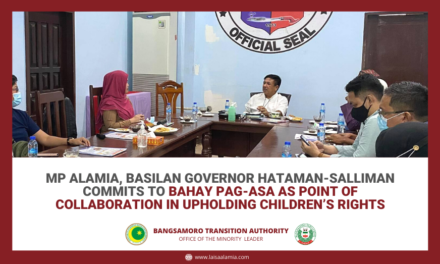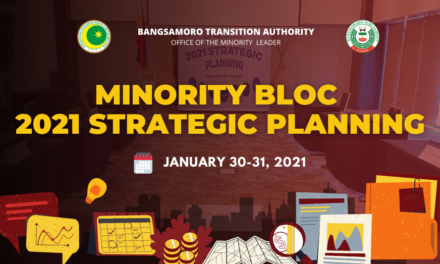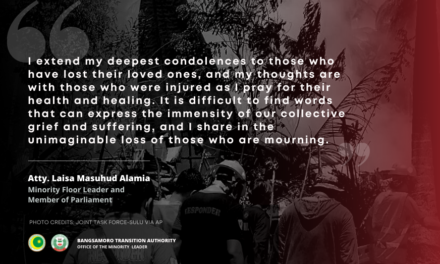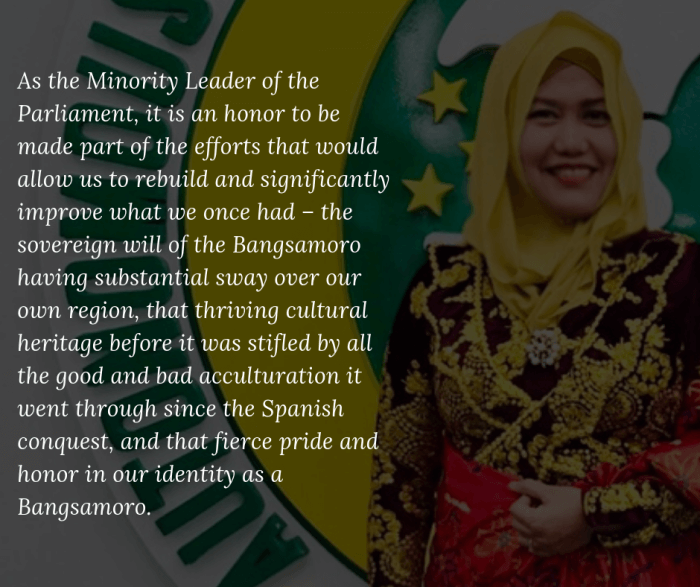With a 15.77-billion peso proposed budget, the Ministry of Public Works (MPW) has one of the biggest budget allocations in the Bangsamoro government for the year 2021. While it is second only to the Ministry of Basic, Higher, and Technical Education in terms of budget allocation, the increase in MPW’s budget amounts to 11-billion pesos — almost three times its budget for the previous year.
Much of this increase can be found in the Ministry’s additional funding for operations, specifically for its Road Network and Other Public and Infrastructure Facilities Program that benefits from a 298 percent increase in allocations. This program, previously indicated as a standalone budget category, now is divided into four subprograms, namely its (1) Road Network Development Program, (2) Bridge Program, (3) Water Supply Program, (4) Port Rehabilitation Program, and (5) Other Infrastructure.
The budget for infrastructure in all five provinces of the Bangsamoro Autonomous Region. devotes almost 80% to roads, bridges, and box culverts. This may be attributed to the Bangsamoro region’s low road density (ratio of the length of the road network to land area) as of 2018, which remains the lowest in the country at 0.10. This is less than half of the national road density average which is at 0.25.
For the 63 barangays in North Cotabato that voted for inclusion in the BARMM, 1.45-billion pesos has been allocated for hard infrastructure, with 99 percent dedicated to road networks.
Next to road networks, the different provinces’ landscape determines the next highest projected expenditure for next year in terms of public works. In Lanao del Sur where waters do not easily flow off flood-prone areas into the lake or sea, and in Maguindanao where a river cuts through the province from the marsh to the sea, the next highest allocation is devoted to flood control, dikes, line/open canals, and revetments at 480-million and 128-million respectively. This is followed by allocations for sea wall, and shore/slope/riverbank protection in Lanao at 48-million pesos, and in Maguindanao at 128-million pesos.
The allocation is different in the island provinces. In Sulu, located between Basilan and Tawi-tawi, ports are an important part of the landscape, hence the allocation for port, rock causeway, or wharf is higher than in the other provinces at 240-million pesos. Apart from Jolo, key ports and
markets are located in the municipalities of Maimbung, Siasi and Pangutaran in Sulu. The same trend in allocation for ports applies in Tawi-tawi, where allocations for port systems are at 210-million pesos. The province’s main ports are in the island of Bongao while smaller transit points are located in the islands of Sibutu, Simunul, and Tandybas. This is followed by the budget for footbridges, and for water systems.
In Basilan, there is a 137-million budget for sea walls and coastline protection, an allocation that is second only to that of road networks.
The budget is almost evenly distributed across provinces based on latest population statistics, with focus on hard infrastructure in the hopes of driving up industry in the region. This includes mining and quarrying, manufacturing, and construction. In 2019 the regional budget was also focused on hard infrastructure, and the highest regional growth for industry in the Philippines was recorded in BARMM at 10.2 percent.
The National Economic and Development Authority notes that “significant improvements in infrastructure development [is] necessary to support productivity.” It notes that “large-scale investments in areas such as construction of roads, harvest and processing facilities, can have multiplier effects, as these facilitate market linkages among regions in Mindanao.”
This series of infographics is the thirteenth installment of the #BARMMBudgetWatch initiative of the Office of the Minority Leader.

